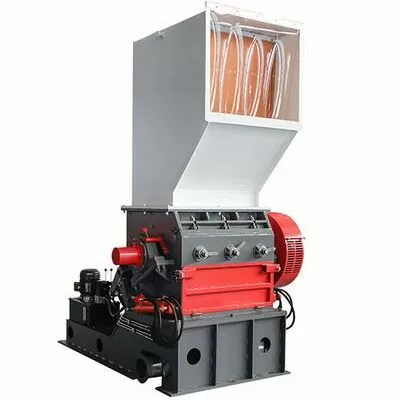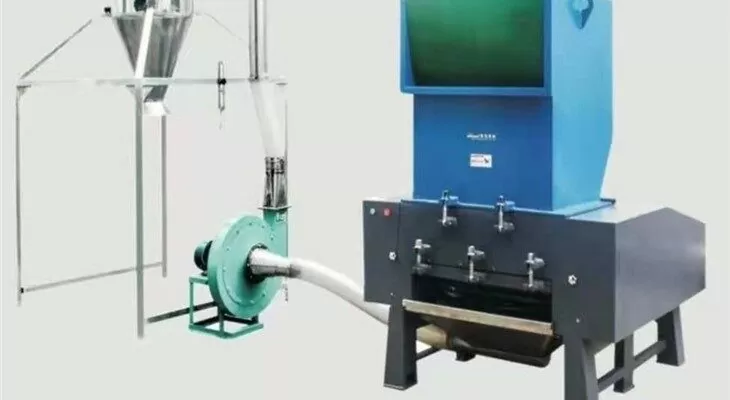I’ve seen mountains of plastic waste choke landfill sites.
It’s a burden on our planet.
I’ve felt the frustration of rising raw material costs.
I’ve watched production lines grind to a halt.
Waste management eats into profits.
That’s the problem.
It’s urgent.
We need a solution that’s efficient and scalable.
We need a way to turn plastic scrap into valuable feedstock.
That’s where crushing technology comes in.
It tackles the waste at its root.
It transforms scrap into uniform granules.
It powers the circular economy.
It drives sustainability.
A plastic crusher uses high-speed rotating blades to cut and grind waste plastics into uniform particles. A screen then sorts the output by size. The result is ready-to-use pellets for reprocessing. This process reduces raw material demand, cuts energy use, and closes the loop in plastic manufacturing.

Ready for the details?
Let’s dive in.
I promise concise sections.
No fluff.
Just expert insights.
And a dash of wit.
What is Plastic Crushing Technology?
Plastic crushing technology breaks down waste into small, consistent particles.
It features a feed hopper.
Below it sits a high-speed rotor.
Knife blades attach to the rotor.
They slice through plastic at speeds over 1000 RPM.
Fixed knives sit opposite for precision cuts.
A surrounding screen lets only the right-sized particles escape.
A powerful motor drives the rotor.
Typical power ratings range from 15 to 75 kW.
We often see throughput rates of 200–1000 kg/h.
How Does Crushing Differ from Traditional Shredding?
Traditional shredders tackle large items first.
They focus on coarse size reduction.
Crushers aim for finer, uniform output.
They use closer blade clearances.
They spin at higher speeds.
The result is consistent particle size.
That boosts downstream processing.
Crushers yield up to 99% usable material.
Shredders often leave a broader size distribution.
That can clog extruders.

What Factors Influence Crush Fineness and Efficiency?
Blade geometry is critical.
Sharper blades give cleaner cuts.
Blade angle affects chip shape.
Rotor speed dictates particle size.
Faster RPM equals smaller granules.
Screen hole diameter sets the maximum size.
Smaller holes mean finer output.
But throughput drops.
Feed rate must match rotor capabilities.
Overfeeding causes jams.
Underfeeding wastes energy.
We hit peak efficiency—over 90%—when these factors align.
How to Select the Right Crushing Equipment?
First, define your throughput needs.
Small batches suit bench-top crushers.
Large volumes demand industrial units.
Consider rotor diameter.
Larger rotors handle bigger chunks.
Match motor power to feedstock hardness.
Check blade material.
We prefer alloy steel or carbide tips.
Ask about screen changeover time.
Quick-change screens cut downtime.
Also factor in noise levels and maintenance access.
How to Optimize Energy Consumption in Crushing?
Energy costs can skyrocket.
We control rotor speed with VFDs.
Soft starters tame inrush currents.
We stabilize feed with metering devices.
They keep the rotor fed evenly.
Idle running? We shut down automatically.
We reclaim heat from motors in cold climates.
Real-time kWh monitoring helps us tweak settings.
Some clients report 15% energy savings.

How to Ensure Quality and Purity of Crushed Material?
Contaminants can ruin your batch.
We install magnetic separators up front.
Air classifiers remove light debris.
We use fine mesh screens for precision sizing.
We rotate or replace screens regularly.
Sensors monitor impurity levels online.
Alerts trigger automatic ejection of off-spec material.
Purity rates exceed 99% in most plants.
How Does Crushing Drive the Circular Economy?
Crushing is our first step in resource regeneration.
It turns end-of-life products into raw material.
These granules feed extruders, molders, and blowers.
They displace virgin resin.
That cuts greenhouse gas emissions.
It slashes dependence on fossil feedstocks.
It fosters closed-loop manufacturing.
Recyclers and manufacturers form a virtuous cycle.
Companies can market products as “made with recycled content”.
Future Trends in Crushing Technology?
Industry 4.0 is coming to crushers.
We’re integrating IoT sensors.
They monitor blade wear in real time.
AI predicts maintenance needs.
Augmented reality guides technicians in repairs.
Self-cleaning screens cut manual labor.
Electric and hybrid drives reduce carbon footprints.
Robotic arms handle feed and discharge.
These advances promise higher uptime and lower operating costs.

Conclusion
I’ve walked you through crushing tech.
From basics to advanced trends.
You know the key factors now.
You see how it powers the circular economy.
Implement it.
Transform waste.
Charge your business with sustainability.
